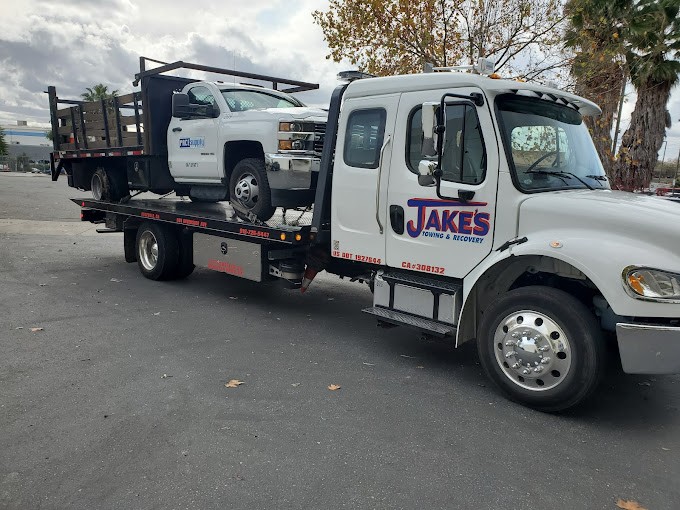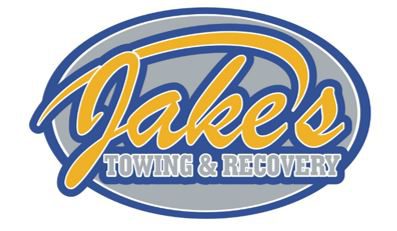-
Office Operating Hours Mon - Friday 8:00 AM - 5:00 PM
-
Call Us 916-726-5447
-
Email Us Info@Jakestow.com
Flat Tire on Your Truck? Get Back on the Road Fast

Table of Contents
- Why Truck Tires Fail and What You Can Do About It
- Immediate Steps to Take After a Flat Tire
- How to Choose the Right Replacement Tire
- Safe Tire Changing Techniques for Large Vehicles
- Why a Tow Truck Company Can Be a Lifesaver
- The Fastest Way to Find a Reliable Truck Towing Service Nearby
- Preventing Flat Tires Before They Happen
- FAQs That Will Change How You Handle Flat Tires
Why Truck Tires Fail and What You Can Do About It
A flat tire isn’t just a delay—it’s a serious road hazard. Heavy trucks carry a lot of weight, and when a tire gives out, it can lead to dangerous situations. Blowouts often happen due to underinflation, excessive heat, or sharp debris on the road. Worn-out treads and overloading also put extra stress on tires. To stay ahead of trouble, check your tires before each trip. Look for cuts, bulges, and low pressure. A few minutes of inspection can keep you from sitting on the roadside waiting for help.
Immediate Steps to Take After a Flat Tire
The moment you feel a tire go, don’t panic. Grip the wheel firmly, take your foot off the gas, and let the truck slow down naturally. Avoid sudden braking—it can make things worse. Once you’ve reached a safe spot, turn on your hazard lights and set up reflective triangles. If you’re on a busy highway, stay inside your truck until help arrives. Flat tires can put you at risk, especially at night or in high-traffic areas. A tow truck company can remove your truck safely and help get you rolling again.
How to Choose the Right Replacement Tire
Not all truck tires are the same. If you need a new one, check the size and load rating before buying. Using the wrong tire can affect handling, fuel use, and safety. Also, consider the type of roads you drive on. Long highway routes need durable tires with deep treads, while city driving benefits from tires with better grip. A good towing service can help you find and install the right tire, so you don’t end up with another roadside headache.
Safe Tire Changing Techniques for Large Vehicles
Changing a truck tire isn’t like swapping out a car tire. Heavy loads and high torque make it risky. If you have the right tools and skills, follow these steps:
- Park on solid ground and use wheel chocks.
- Never trust a standard jack—use a heavy-duty air jack instead.
- Loosen the lug nuts before lifting the truck.
- Replace the tire with the same size and type.
- Tighten the nuts in a crisscross pattern for even pressure.
If you’re stuck on a slope or in heavy traffic, don’t take chances. Call a professional truck towing service near you to handle the job safely.
Why a Tow Truck Company Can Be a Lifesaver
Some flat tires are easy to fix. Others? Not so much. If your truck is fully loaded, you might not have the tools to swap out a tire yourself. Even if you do, working on the roadside is risky. A good towing company does more than haul your truck—they can deliver a replacement tire, provide on-site repair, or transport your vehicle to a shop. Instead of losing hours struggling with a tire change, let the pros get you moving faster.
The Fastest Way to Find a Reliable Truck Towing Service Nearby
Not all towing services are equal. Some take forever to show up, while others lack the right equipment for big trucks. The key is to look for a company with 24/7 service, trained drivers, and experience with heavy vehicles. Reviews and response times matter. If you’re in a bind, don’t just search for a tow truck company randomly—have a reliable one saved in your phone before you need it.
Preventing Flat Tires Before They Happen
Avoiding a flat is always better than dealing with one. Here’s what you can do:
- Keep your tires inflated to the right pressure.
- Check tread depth regularly and replace worn tires.
- Rotate tires every 10,000 miles to even out wear.
- Avoid overloading, which puts extra stress on tires.
- Watch out for road debris, especially in construction zones.
Taking care of your tires keeps you safer and saves money in the long run.
FAQs That Will Change How You Handle Flat Tires
- Can I drive on a flat tire for a short distance?
No. Even a few feet on a flat can destroy the rim, making repairs even more expensive. If your tire is flat, stop driving immediately and get help.
- How do I know if my truck tire is about to fail?
Warning signs include vibrations, uneven wear, low pressure, and visible damage. If you notice any of these, replace the tire before it gives out.
- Do I need to replace both tires on a dual-wheel setup?
Yes, in most cases. Uneven wear can cause balance issues and put extra stress on the suspension. If one tire in a dual pair fails, it’s often best to replace both.
- Can I repair a truck tire myself?
Only if you have the right tools and experience. A patch or plug might work for small punctures, but sidewall damage or large holes need professional repair.
- Why do brand-new tires sometimes fail?
New tires can fail due to factory defects, improper installation, or underinflation. Always inspect new tires and break them in properly for the first 500 miles.
Conclusion
At Jake’s Towing and Recovery, we don’t just tow trucks—we get drivers back on the road fast. If you need help with a flat, our expert team is ready 24/7. Call us at 916-726-5447 for quick service, reliable repairs, and professional truck towing service near me when you need it most.
